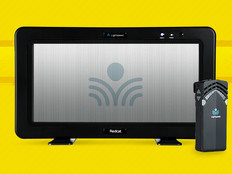Lesson Plan: Teach Students to Put the 'You' in YouTube
Lesson Description
Communication is an essential skill that all students must develop to function successfully in both the physical and digital worlds.
That's what "Finding Youth Voice" is about: helping young people develop a perspective and articulate their ideas in meaningful ways using digital media.
This project hinges on the passion and motivation of the students, who are tasked with telling personal stories in digital form, and that of the teachers who mentor them. The diversity of the technology tools that are available for student use also will determine how creative they can be in the documentary films, music videos, animated shorts, audio recordings or other multimedia projects they produce. What matters most is that their own perspective drives the work.
Video tends to be a popular choice among students, so this lesson plan details how to proceed with that type of project. To begin, meet with students individually to discuss the topics of their videos and what will and won't be possible given technological and time constraints. Have students write about their topics and what they want viewers to take away from their work.
Instruct students to detail the story, audience, message and style of the video they're producing and why it's meaningful to them. This can be accomplished with a "see/hear chart," which helps students map out precisely what viewers will see and hear in each scene.
Next, have students create storyboards that outline how each scene will be filmed, including such details as camera angles, the length of each shot and directions for the actors. Once students complete their see/hear charts and storyboards, give them access to video cameras, microphones and any other technologies they will need to film their scenes.
When filming is complete, have students use Microsoft Windows Movie Maker or professional postproduction tools such as Adobe Premiere Pro or Avid to edit their footage, add titles and credits, and insert music and voiceovers. Students can then share their videos with each other in class and via social media sites such as YouTube, Facebook and Vimeo. For an even wider audience, search Withoutabox, an online application submission service for film festivals, and other resources to find more venues through which projects can be shared.
Subject Area
This project was developed for high school students but can be adapted for any grade level.
Grading Rubric
Students should be graded on the professionalism and clarity of their work. Extra credit can be given for creativity.
Teaching Tips
- Allow students to drive their own projects.
- Require students to complete the written portions
of the assignment before they begin filming. - Help students learn to defend their creative choices about the content and how they present it.







